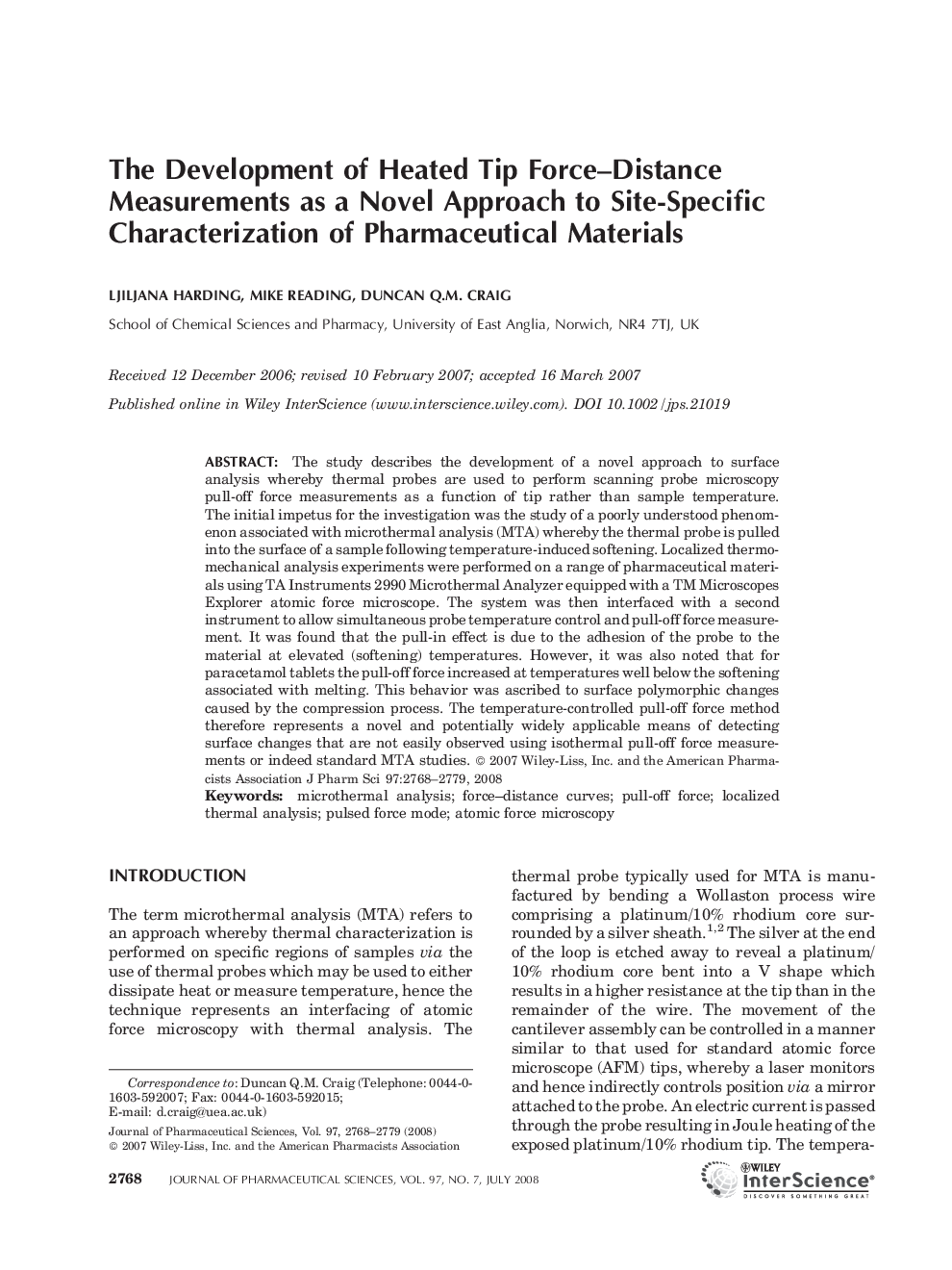| Article ID | Journal | Published Year | Pages | File Type |
|---|---|---|---|---|
| 2485534 | Journal of Pharmaceutical Sciences | 2008 | 12 Pages |
Abstract
The study describes the development of a novel approach to surface analysis whereby thermal probes are used to perform scanning probe microscopy pull-off force measurements as a function of tip rather than sample temperature. The initial impetus for the investigation was the study of a poorly understood phenomenon associated with microthermal analysis (MTA) whereby the thermal probe is pulled into the surface of a sample following temperature-induced softening. Localized thermomechanical analysis experiments were performed on a range of pharmaceutical materials using TA Instruments 2990 Microthermal Analyzer equipped with a TM Microscopes Explorer atomic force microscope. The system was then interfaced with a second instrument to allow simultaneous probe temperature control and pull-off force measurement. It was found that the pull-in effect is due to the adhesion of the probe to the material at elevated (softening) temperatures. However, it was also noted that for paracetamol tablets the pull-off force increased at temperatures well below the softening associated with melting. This behavior was ascribed to surface polymorphic changes caused by the compression process. The temperature-controlled pull-off force method therefore represents a novel and potentially widely applicable means of detecting surface changes that are not easily observed using isothermal pull-off force measurements or indeed standard MTA studies.
Keywords
Related Topics
Health Sciences
Pharmacology, Toxicology and Pharmaceutical Science
Drug Discovery
Authors
Ljiljana Harding, Mike Reading, Duncan Q.M. Craig,
